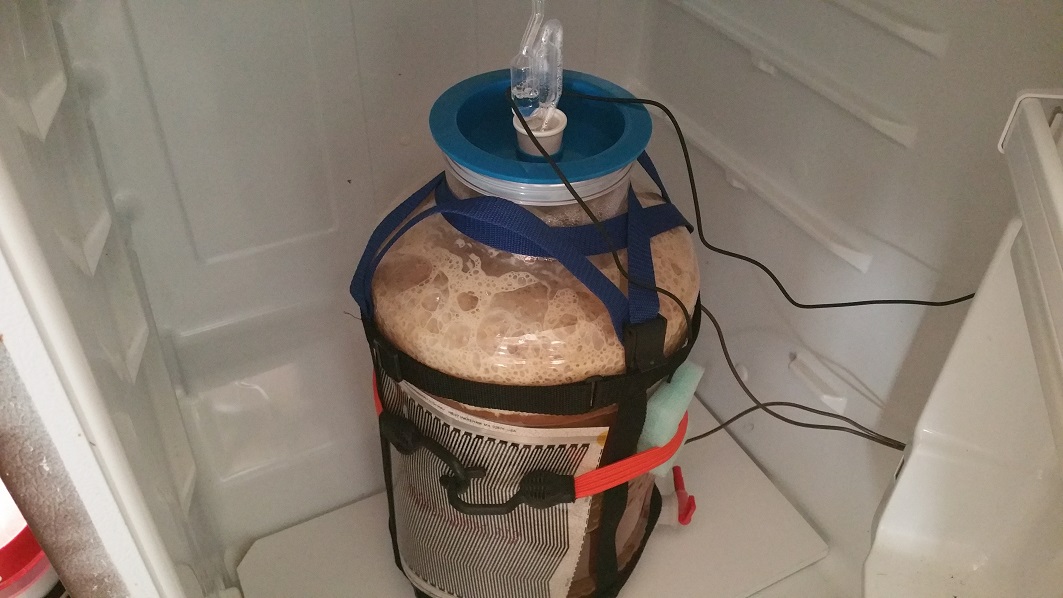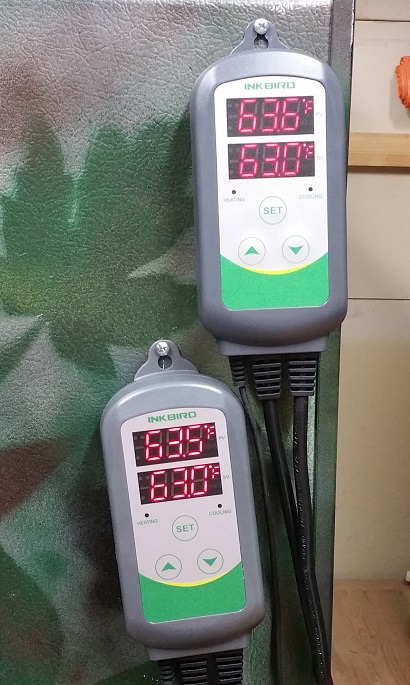I do not use a temperature controlled chamber because I don't have the equipment yet. But my last brew got me thinking. I used wyeast 1056 and set my fermenter in the usual spot where it's always 67 degrees in my kitchen. The thermometer strip on the carboy confirmed this. By day 2 at high krausen the temperature read 74. This is very normal for my beers, about a 6-7 degree spike in temperature.
Theoretically, why wouldn't this same thing happen in a temperature controlled chamber? I have central air conditioning and this spot I use is always 67, which although much larger a space, is a temperature controlled "chamber". Is a small chamber better at cooling the internal temperature spike that's natural from fermenting yeast? Seems like you would have to account for this spike when setting the temperature.
Just to give you some ideas, here's what I have. These decisions come down to resources, space available, type of fermenter used.
Here are pics of the two ferm chambers I have:





The large one I bought from a guy who had a baby and was selling his brewing equipment, so don't be critical of the paint job.

The small one I bought used for $60, though I've since seen them for less on Craigslist and Facebook.
You can probably find a regular refrigerator for cheap, maybe even free. The minis are nice in terms of their footprint, but you have to
take your fermenter when you buy it to make sure it'll fit. Some will cut of the plastic shelving stuff on the door to allow it to fully close; I got lucky with mine in that it just BARELY will close without that.
One note on that: some people will bend the freezer unit down and back to make room for the airlock. The problem is if you kink the lines, your fridge is toast. So I got around that by using a drilled stopper, a short piece of rigid plastic tubing, and some silicone tubing to run the CO2 out of the fermenter to an airlock jar. I drilled a couple holes right in the front of the fridge, where there are no cooling lines, so I could run that tubing as well as the wires for heat mat and controller out of the top.
You *can* run the wires for the heat mat and controller between door and fridge on the hinge side, many brewers do that. But since I had to drill a hole for the silicone tubing anyway, I decided to do a second one for the wires.
I then terminate that tubing in a jar on top to act as airlock. One added advantage of doing that is I can see it bubbling away on the outside without opening up the ferm chamber. That gives me an oddly satisfying feeling.

Here's a link to the
Inkbird 308 I'm talking about. Sometimes Inkbird (a sponsor here) does a 20-percent off sale on them. I actually have 5 of them, three for ferm chamber control, one on my keezer, and a spare.
One more thing about the large ferm chamber: It actually serves triple duty for me, as a ferm chamber, as a place to store extra kegs, and as a place to carbonate kegs. I run CO2 in there with lines, and have one bulkhead shank that allows me to pass CO2 from fermentation outside the refrigerator to an airlock jar to monitor what's happening. Yeah, I'm pretty ridiculous on all this.
Anyway, hopefully the above gives you some ideas for what might work in your space, with your resources.









